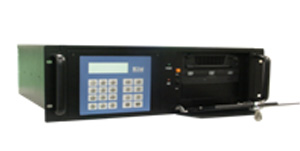There are a lot of challenges in designing jammers. To better understand this problem, we need to discuss and analyze, in detail, various techniques for jamming and anti-jamming. Because of the proliferation of wireless technologies, jamming in wireless networks has become a major research problem due to the ease in blocking communication in wireless networks. Jamming attacks are a subset of denial of service (DoS) attacks in which malicious nodes block legitimate communication by causing intentional interference in networks. There are two main aspects of jamming techniques in wireless ad hoc networks: types of jammers and placement of jammers for effective jamming. To address jamming problem, various jamming localization, detection and countermeasure mechanisms are studied. Finally, we describe the open issues in this field, such as energy efficient detection scheme and jammer classification.

Concept of Jamming
Jamming makes use of intentional radio interferences to harm wireless communications by keeping communicating medium busy. It also cause a transmitter to back-off whenever it senses busy wireless medium, or corrupted signal received at receivers.
In this section, we elaborate on various types of jammers and the placement of jammers to maximize the jammed area. Jamming mostly targets attacks at the physical layer but sometimes cross-layer attacks are possible too.
Jamming Techniques
The jamming effect of a jammer depends on its radio transmitter power, location and influence on the network. Either that it will affect the targeted node.
Depending upon the attack strategy, a jammer can either have the same or different capabilities. It ranges from legitimate nodes in the network which they are attacking.
Types of jammers
Jammers are malicious wireless nodes planted by an attacker, in order to cause intentional interference in a wireless network.
A jammer may jams a network in various ways to make the jamming as effective as possible.
Basically, a jammer can be either elementary or advanced depending upon its functionality.
For the elementary jammers, we divided them into two subgroups: proactive and reactive.
The detailed classification of different jammers can be found in Fig. The advanced ones are also classified into two sub-types: function-specific and smart-hybrid. It sends packets or random bits on the channel it is operating on, putting all the others nodes on that channel in non-operating modes.
1. Proactive jammer
Proactive jammer transmits jamming (interfering) signals whether or not there is data communication in a network. There are three basic types of proactive jammers: constant, deceptive and random. However, it does not switch channels, and it operates on only one channel until its energy is exhausted. From here on, whenever we use proactive jammers it can mean all these three.
1.2 constant jammer
prevents legitimate nodes from communicating with each other by causing the wireless media to be constantly busy.
This type of attack is energy inefficient and easy to detect but is very easy to launch and can damage network communications to the point that no one can communicate at any time.
According to the CSMA mechanism, a legitimate node has to sense the status of the wireless medium before transmitting.
Constant jammer emits continuous, random bits without following the CSMA protocol (Xu et al, 2005).
If the medium is continuously idle for a DCF Interframe Space (DIFS) duration, only then it is supposed to transmit a frame.
If the channel is found busy during the DIFS interval, the station should defer its transmission.
1.3 Deceptive jammer
continuously transmits regular packets (Xu et al, 2005) instead of emitting random bits (as in constant jammer).
Compared to a constant jammer, it is more difficult to detect a deceptive jammer because it transmits legitimate packets instead of random bits.
It deceive other nodes to believe that a legitimate transmission is taking place so that they remain in receiving states until the jammer is turned off or dies.
Similar to the constant jammer, deceptive jammer is also energy inefficient due to the continuous transmission but is very easily implemented.
1.4 Random Jammers
The ratios between sleeping and jamming time can be manipulated to adjust this tradeoff between efficiency and effectiveness. There is a tradeoff between jamming effectiveness and energy saving because it cannot jam during its sleeping period.
It sleeps for a certain time of period and then becomes active for jamming before returning back to a sleep state.
The sleeping and jamming time periods are either fixed or random.
It continuously switches between two states: sleep phase and jamming phase.
Random jammer intermittently transmits either random bits or regular packets into networks (Xu et al, 2005).
Contrary to the above two jammers, it aims at saving energy.
Challenges in Designing Jammers
Reactive jammer starts jamming only when it observes a network activity occurs on a certain channel (Xu et al, 2005).
According to (Pelechrinis et al, 2011), the following are two different ways to implement a reactive jammer.
Since it has to constantly monitor the network, reactive jammer is less energy efficient than random jammer.
As a result, a reactive jammer targets on compromising the reception of a message.
2.1 Reactive Data/ACK jammer
This type of jammer can corrupt data packets, or it waits until the data packets reach the receiver and then corrupts the ACK packets (Pelechrinis et al, 2011).
Reactive Data/ACK jammer jams the network by corrupting the transmissions of data or acknowledgement (ACK) packets.
In the first case, because the data packets are not received correctly at the receiver, they have to be re-transmitted.
The corruptions of both data packets and ACK messages will lead to re-transmissions at the sender end.
In the second case, since the sender does not receive the ACKs, it believes something is wrong at the receiver side, e.g. buffer overflow.
Therefore, it will retransmit the data packets. It does not react until a data transmission starts at the transmitter end.


































